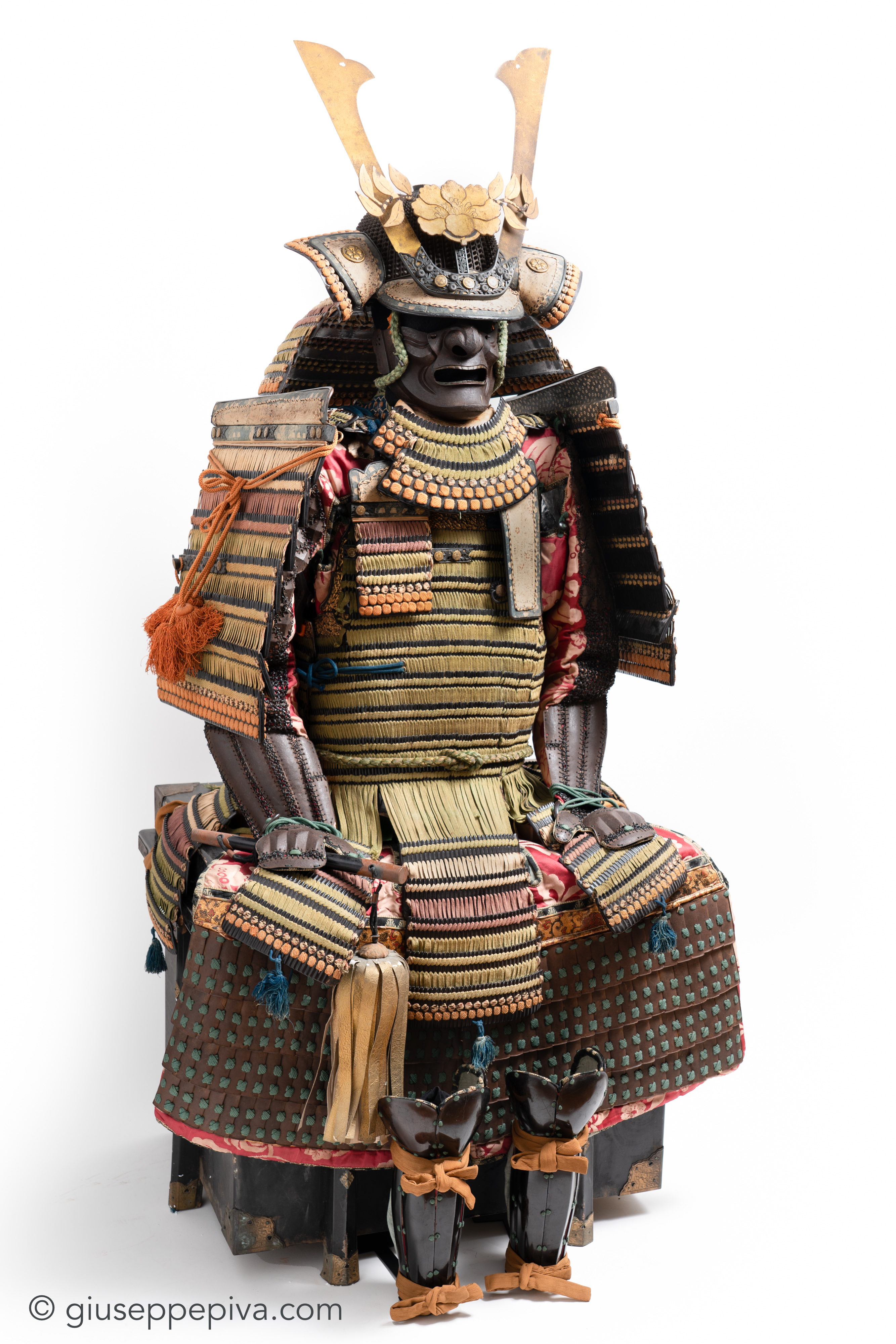Hon-kozane ni-mai do tosei gusoku
Samurai armor in revival style
Edo Period, 17th to 18th century
Signature on kabuto: Jōshū jū Saotome Ietada
Kabuto [helmet]: A russet iron (tetsu sabiji) sixty-two plate kabuto, each mounted with twenty-five small tapered standing rivets (ko-boshi) of decreasing size; the front plate, larger than the others, is fitted with two lines of rivets, while the rear one is left empty, for a total of 1.550 rivets.
The typical "Saotome-byo", an extra rivet which is almost an additional signature of the Saotome armorers, is visible inside.
Maedate [helmet crest]: Kuwagata (stylized horns) with shakudo kuwagata-dai (support) fitted with three hanabishi (flower-shaped family crest) and a large gilt-wood peony
Menpō [mask]: A russet iron (tetsu sabiji) ressei-men (mask with fierce expression)
Dō [cuirass]: Ni-mai dō (made in two parts) with hon-kozane (true scale) construction. Stencilled leather plates with engraved shakudo borders, fine pierced kanamono (application) bearing a hanabishi.
Sode [shoulder guards]: Large type (ō-sode), with fine kanamono and decorations.
Kote [sleeves]: In russet iron, with a hanabishi on the back of the hand (tekko).
Haidate [thigh guard]: Of hakama type (full trousers), made of tied rectangular iron plates.
Suneate [shin guards]: Finished in black urushi lacquer.
Accessories: A saihai (commander’s baton); high-level kara-bitsu (storage box)
With its large sode (shoulder guards) and old-fashioned construction, the style of the armor is reminiscent of the medieval suits popular in the Edo period. This fashion for early style armour was firmly established when the eighth shogun Tokugawa Ieyoshi (1684 - 1750) promoted a revival of ancient weaponry, including swords and armor, to revitalize what he believed to be a decline in the nation's martial spirit.
The cuirass is crafted with hundreds of tiny plates joined together. This system, known as hon-kozane ("true scales"), was a complex, expensive, yet effective method of lacing together numerous small plates; it was used until the sixteenth century and then recovered during the Edo period for revival-style armor for high-ranking samurai.
Ietada, of which existed few generations, is considered to be the founder of the Saotome school, which takes its name from the village in the Hitachi province where it originated. According to the Meiko Zukan, the most important antique manuscript about Japanese armor, it was in fact created by Saotome Chikara, a samurai at the service of the Tagaya clan who started this activity after he became a ronin. The Tagaya clan were stripped of their 60,000 koku holdings after the Sekigahara battle due to their defection to the Uesugi clan, so it is probably after 1600 that Ietada - the name that Chikara choose to sign his works - founded the Saotome school, even if it is unclear how he managed to learn such skill in manufacturing helmets.
Inventory Nr: 1806
- 1 of 2
- seguente ›
Info works
Copyright © 2016 - giuseppe piva - VAT: 05104180962


















